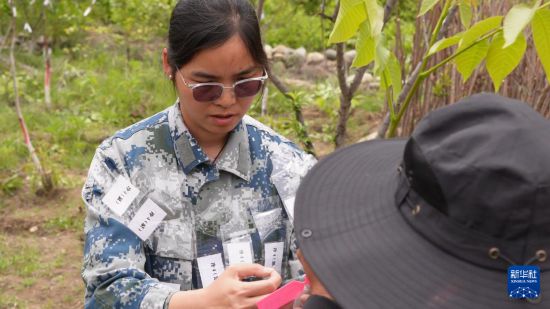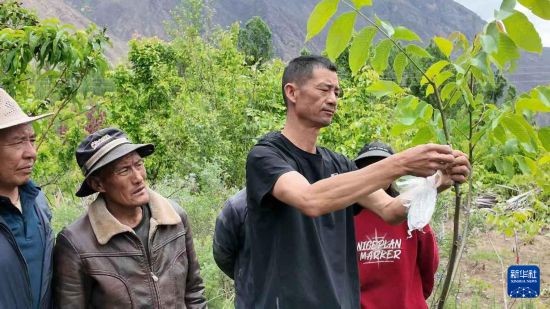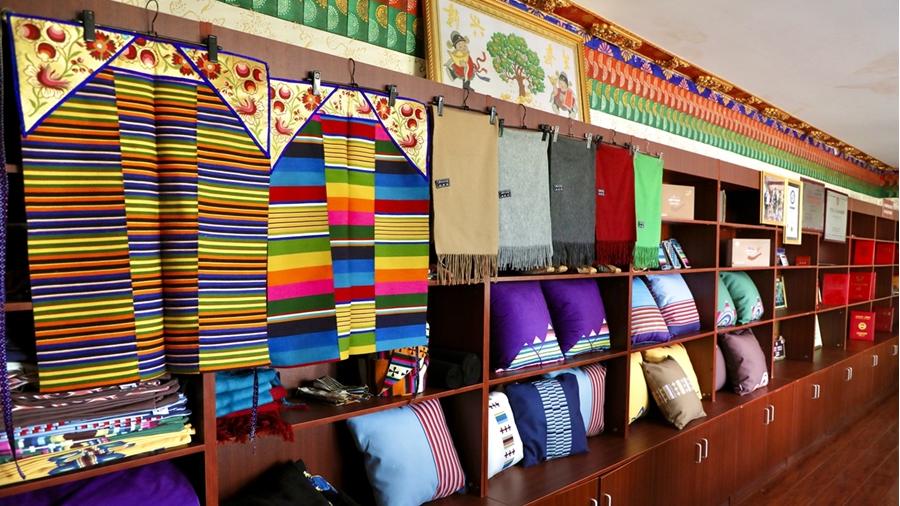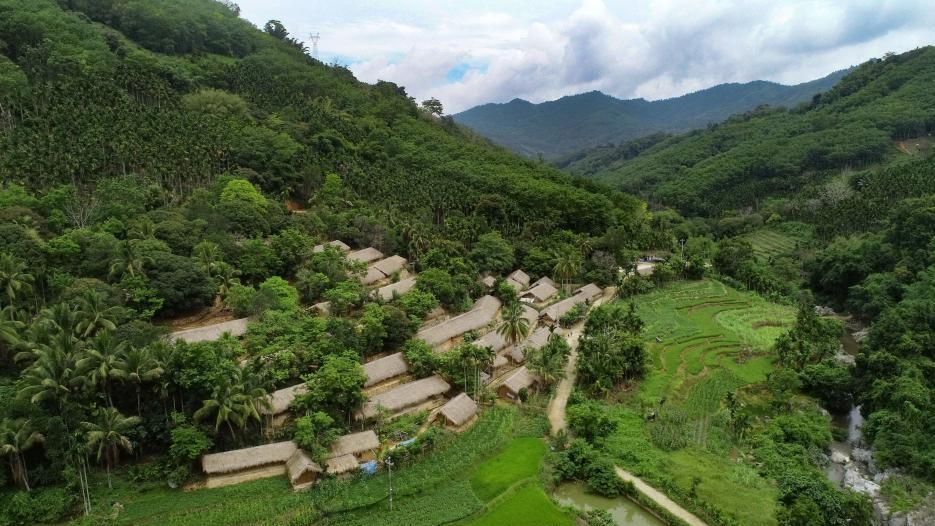Science revives ancient walnut forests, boosts incomes in SW China's Xizang

Photo taken on May 24, 2025 shows Liu Liping and a local villager labeling a walnut tree in Zhaxi Dinggang village, Gyaca county, Shannan city, southwest China's Xizang Autonomous Region. (Xinhua/Zhuang Yunkai)
On a winding mountain road in Zhaxi Dinggang village, Gyaca county, Shannan city, in southwest China's Xizang Autonomous Region, Dr. Liu Liping peeled labels from her camouflage jacket and pressed them onto freshly grafted walnut branches.
Liu, from the Tibet Plateau Walnut Industry Research Institute at Yangtze University in central China's Hubei Province, recalled her first trip to Xizang in early 2020, when she was struck by the sight of 3,657 ancient walnut trees, unique to the Qinghai-Tibet Plateau, in Gyaca county.
Although walnut cultivation in the county dates back more than 1,000 years, villagers struggled for generations to make the most of their ancient groves because they lacked scientific management and modern production technology.
"We didn't know how to plant properly before. The walnuts were small, and we couldn't sell them," said the Party chief of Zhaxi Dinggang village. The ecological value of the walnut forests remained untapped, with riverside areas left barren and strong winds often obscuring the roads.
The transformation began in March 2021, when Hubei Province launched its technical assistance program for Xizang under the 14th Five-Year Plan (2021-2025). Liu and her team traveled to Gyaca county, dedicating themselves to selecting better walnut varieties, breeding them, and using scientific methods to grow the trees.
Liu spent years visiting all 27 administrative villages in the county where walnuts are grown.

Photo taken on May 24, 2025 shows a technician demonstrating walnut tree grafting to villagers in Zhaxi Dinggang village, Gyaca county, Shannan city, southwest China's Xizang Autonomous Region. (Xinhua/Zhuang Yunkai)
"Initially, we faced plenty of cold shoulders," she said. But over time, her persistence and sincerity won the villagers' trust.
Gyaca county has now planted more than 520,000 walnut trees across 45,000 mu (about 3,000 hectares), producing 1,200 tonnes of walnuts annually, with an output value exceeding 80 million yuan ($11.13 million).
During the 14th Five-Year Plan period, more than 100,000 walnut trees have been planted along the Yarlung Tsangpo River's ecological corridor in the county, helping stabilize the soil, prevent sand erosion and increase local incomes.
Zhang Rongceng, a grassroots official born after 1995 who has been stationed in Gyaca since 2022, said that more than 500 villagers, including many traditional growers, have participated in training sessions on walnut grafting technology.
Gyaca's walnut seedlings are used not only for local tree planting and development, but also to support the largest tree-planting project in Lhasa, the capital of Xizang. Since 2022, nearly 700,000 mu of land in Lhasa have been planted with trees under the program, with an overall survival rate of about 85 percent.
Kan Simeng, who was recognized in 2024 for his work in the Lhasa tree-planting program and was born after 1995, became the on-site supervisor for a village area at more than 3,700 meters above sea level in early 2023. In this area, 3,170 mu of trees were planted.
"What kind of trees can take root at elevations between 3,700 and 4,100 meters?" Kan wondered. To find the answer, he traveled 200 kilometers to Gyaca county, where he discovered walnut seedlings that could survive at high altitudes.
"These seedlings have high survival rates, and their roots can effectively stabilize the soil and prevent erosion," Kan said.
Photos
Related Stories
- Apron weaving tradition thrives in SW China's Xizang
- Bridging borders: Xizang's Shigatse strengthens trade,?ties with South Asia
- Birth-giving migratory journey of Tibetan antelopes in SW China's Xizang
- China's Xizang maintains stable ecological environment in 2024
- Xizang maintains world-class ecological standards
- E-commerce opens broader markets for Xizang specialties
- In pics: traditional yak racing in Lhasa, China's Xizang
- Scenery of Basum Tso in Xizang, SW China
- Logo unveiled for 60th anniversary celebration of Xizang Autonomous Region
- Trending in China | Lhasa: the 'City of Sunshine'
Copyright © 2025 People's Daily Online. All Rights Reserved.









